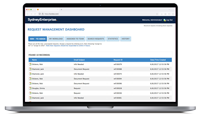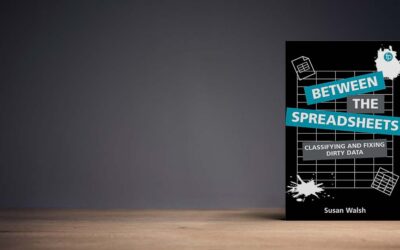Interview with Librarian Keith Knop about Music Cataloging
Lauren Hays
I recently interviewed Keith Knop, Music Cataloging Librarian at the University of Georgia, about the unique aspects of that discipline.
1. Please introduce yourself to our readers.
My name is Keith Knop and I have been cataloging music for about 18 years now, starting as a paraprofessional at the Warren D. Allen Music Library at Florida State University. Since 2017 I have been the music cataloging librarian at the University of Georgia, where I supervise paraprofessional staff. From 2020-2024 I chaired the Content Standards Subcommittee of the Music Library Association (the U.S. branch of IAML, the International Association of Music Libraries), which among other things develops and maintains the MLA Best Practices for Music Cataloging Using RDA and MARC21. I have also been active in teaching cataloging in workshops and online, and since 2019 I have taught Music Description and Access for the University at Buffalo in alternate Fall semesters.
2. How did you learn about music cataloging?
While I was a graduate student pursuing a degree in musicology, I worked part-time at the FSU music library. As a graduate student I got to work on some more involved projects, which including searching WorldCat for catalog records for new acquisitions (mostly scores, CDs, and DVDs) and creating basic MARC records for local recital recordings from a simple template. Those were my introductions to cataloging in general. When the paraprofessional music cataloging position opened up, I applied for the job and got it. Initially that was just to stay afloat while working on my dissertation, but since FSU has an information science program and I was entitled to employee tuition waivers I decided to pursue a library degree as well.
So in a way I learned cataloging backwards, starting with MARC fields, then a handful of AACR2 instructions relevant to music, and only later did I really get the big-picture introduction to cataloging. As the timing worked out, however, I finished my MLIS right about the time North American catalogers were making the switch from AACR2 to RDA, so in a way I was learning right along with other, more experienced catalogers.
3. What interests you about this area of librarianship?
My background is in music—music history, specifically—so there is a part of music cataloging that scratches the research itch for me. Doing original cataloging for music can involve a fair bit of digging around to make sure what you’ve got in hand is really what you think it is, especially if the title is very generic. Additionally, coming from a musicological background gives me an appreciation for the work that goes into making music materials discoverable and for how challenging finding that material can be from the end-user perspective.
4. What makes music cataloging unique?
Many things, but I will point out three things in particular that stand out to me.
First, catalogers may be aware that music cataloging has long made frequent and aggressive use of complicated access points (or uniform titles, or filing titles—terminology has changed over time) for musical works, but may not be familiar with the reasons why. The example I like to use is the Italian composer Domenico Scarlatti (1685-1757)—familiar to many piano students—who spent much of his career as harpsichord tutor to Queen Maria Barbara of Portugal and her children. He wrote over 550 keyboard sonatas, none of which have unique titles, which mostly circulated in manuscript during his lifetime—only 30 were published while he was alive—and we have no idea in what order he wrote them because most of his original manuscripts were likely destroyed in the great Lisbon earthquake of 1755. Thus, over the years, performers and scholars developed four mutually incompatible numbering systems.
So if you have, say, a guitar arrangement of a Scarlatti sonata that simply calls itself something like “Sonata in D major, arranged for guitar”—well, gee, thanks, that narrows it down to only about 60 options (assuming it was actually written in D major). Therefore, in order to have any hope of finding anything, a rigorous and consistent way of referring to specific works, no matter how unobliging the composer may have been in the matter, is absolutely vital. Scarlatti is an extreme example, but no element of his situation is uncommon.
However, those problems are largely specific to one particular type of music: Western art music—”classical” if you prefer—and styles that function similarly. While it is tempting to think of “music” as one homogenous type of material, the fact is that different musical cultures (and I use the term very broadly) conceptualize music very differently. Classical music mostly functions much as books do, in the sense that—in FRBR/LRM terms—most patrons are likely primarily concerned with the work entity. As long as it has all the right words (or notes) in the right order, in a format that is relevant to them, the details of the specific expression may not be important.
But that is not necessarily true of other kinds of music, where users often do have specific expectations of the expression. In those cases, trying to force everything into the same mold produces results that are at best unhelpful and at worse actively misleading and a waste of everyone’s time. For most popular genres, the “canonical” version of a song is often the studio album version, for example, but bands also often release live concert recordings, and someone looking for one may not be satisfied with the other. Due to the improvisatory nature of jazz, two performances of the “same” work may differ so significantly that one could reasonably dispute whether they are even the same work at all. Thus, it is also important to know when not to be heavy-handed with access points.
Second, music resources tend to proliferate in a way that is uncommon for most textual materials. If a book is successful, for example, it may have a few different versions floating around—hardback, paperback, e-book, possibly an audiobook. If it is nonfiction, it might go through a couple of editions. For the most part you are not going to see a real explosion of versions except for, say, established literary classics. You might find dozens of editions for your Mark Twains and Jane Austens, but those are relative outliers.
With music, however, right off the bat for the same work you could be dealing with notated music or a recorded performance, and while a patron may not care whether they get the paperback or hardback version of a book, typically recordings and printed music are not going to be acceptable substitutes for one another. Even within those categories, different versions may not be comparable, as in the live vs studio recording example above. With notated music, you could be looking a full score, a vocal score (a version with accompaniment reduced usually for a single pianist, rather than an entire orchestra), a set parts each containing only the music for a single performer, etc. Those formats all serve very different functions and are not interchangeable in most circumstances. Additionally, editions may be created with different purposes in mind: some are geared mostly toward scholars, with detailed documentation of editorial decisions that most performers will not care about; others are intended mostly for teaching and instruction, etc.
On top of all of that, there are situational differences in scale. A prolific novelist might create a couple dozen novels in a career, but a prolific songwriter could create hundreds of songs. Add all the foregoing together and you end up with a situation where, although Beethoven only wrote nine symphonies, if you naively search WorldCat for “Beethoven” and “symphony” with no other qualifiers you get over 28,000 results.
Finally, because staff notation for music is distinct from text notation, it means the language(s) on the title page of a resource often have very little to do with the content. Changes in the language of the title do not reliably signal translations even for vocal music. As a side effect, parallel title information for music can get intense, and it is not unheard of to find three or four (or more) languages on a title page. I have had to deal with titles in most European languages, plus occasional forays into Japanese and Korean and a smattering of Arabic. This also feeds back into the first point: when you can have the same thing under radically different titles, you absolutely require some way to group them together. Someone who wants to read Agatha Christie’s Elephants Can Remember in English has no use for Elefanten vergessen nicht or Une memoire d’éléphant, but a pianist does not care in the slightest whether something is called “Piece for piano in D major” or “Klavierstück D-Dur” or “Morceau de piano en re majeur”: it’s all the same music.
5. How have you seen music cataloging change over time?
The biggest shift was probably the migration from AACR2 cataloging rules to RDA. In a lot of ways, RDA (and the FRBR model it is based on) were a breath of fresh air for music catalogers, since AACR2 had some definite book biases built in, which RDA tried to reduce, though not always successfully. The FRBR model also works well for describing music (at least right up to the point when it doesn’t; when it falls apart, it falls apart hard). Which is not to say every change was greeted with open arms. AACR2 had lots of little exceptions carved out for specific situations, including for music, which though they made things less consistent overall were a little better at allowing for things like the different emphases of different musical traditions.
The Music Library Association has a long history of collaborating with the Library of Congress and the Program for Cooperative Cataloging on cataloging issues. Since 2014 its Cataloging and Metadata Committee has been actively engaged in producing guidance documentation for catalogers working with music materials, including best practices for RDA and two controlled vocabularies (the Library of Congress Genre/Form Terms and Library of Congress Medium of Performance Terms). I expect this suite of cataloging aides will continue to expand.
6. What changes do you see in the future?
The two things looming large in my mind now, which will probably not be surprising, are the eventual changeover to the new revision of RDA, based on the IFLA Library Reference Model, and growing adoption of linked data.
The current, official version of the RDA text and the accompanying revisions to the structure of the RDA Toolkit have occasioned a lot of anxiety and concern. This is due to the opaque language used in the revised text, the fragmenting of instructions across multiple locations, and the change from a primarily instruction-driven resource to an option-based “data dictionary” that leaves catalogers to their own devices to a much greater extent than previous cataloging content standards. This places a heavy burden on any prospective user to essentially DIY their own cataloging standards. The positive side, though, is that this modularity of design, along with some loosening of restrictions from original RDA, does allow for a more curated and nuanced approach to different kinds of material. MLA has already made some preliminary recommendations allowing for a more performer-centric descriptive approach to certain styles of music when that makes more intuitive sense to users; in contrast, original RDA forces an approach that foregrounds work creators, even when the creator of the work in question is ambiguous or not usually of bibliographic interest.
Linked data holds a lot of promise for music, but it also introduces some new challenges (or replaces one challenge with a different one). It would be wonderful, for example, to spend more time differentiating between works and less time fretting over how to construct unique and consistent character strings to represent them. However, the issue I mentioned earlier about proliferation of music materials points to an obvious problem: someone still has to decide which entities get linked to what. That is a lot simpler when there are five manifestations of a work rather than hundreds, often without sufficient information available to be certain which ones really represent different expressions.
One other thing, not specific to music though specialist catalogers may be disproportionately affected, is a general if uneven decline in support for traditional metadata work. This often leaves catalogers in the position of having to advocate for the value of what they do, while simultaneously dealing with increased workloads due to understaffing.
7. Is there anything else you would like to share?
A perpetual problem with music is that it is a field with a lot of specialized needs but, often, a relatively small user base compared to, say, the entire student body of a university. In this respect, it has many similarities with other specialist areas, like map cataloging or serials cataloging (though obviously the serials user base is consistently much larger). As catalogers, it can be incredibly frustrating to devote time and energy to recording data that’s significant and valuable to the audience for the materials we work with, but which is poorly supported, misleadingly implemented, or even entirely discarded by discovery tools we often have little influence over.
Lauren Hays
**Disclaimer: Any in-line promotional text does not imply Lucidea product endorsement by the author of this post.
Never miss another post. Subscribe today!
Similar Posts
Balancing Human Oversight with AI: Tips for Special Librarians
Special librarians can use AI without losing expert control. Use this practical checklist to verify accuracy, bias, sources, licensing, and fit.
End-of-Calendar-Year Reflections for School Librarians
The end of the calendar year offers school librarians a chance to reflect on what’s working, make thoughtful adjustments, and plan for the year ahead.
Library Instruction: Learning Styles Are Out, Evidence-Based Practices Are In
For instructors and educators of all types, it’s vital to realize that evidence-based practices are more effective than catering to the myth of learning styles.
Interview with Susan Walsh:
Dirty Data, AI, and the 2nd Edition of “Between the Spreadsheets”
Author Susan Walsh discusses the new edition of “Between the Spreadsheets,” sharing insights on fixing dirty data, AI’s impact, and her COAT framework.





Leave a Comment
Comments are reviewed and must adhere to our comments policy.
0 Comments